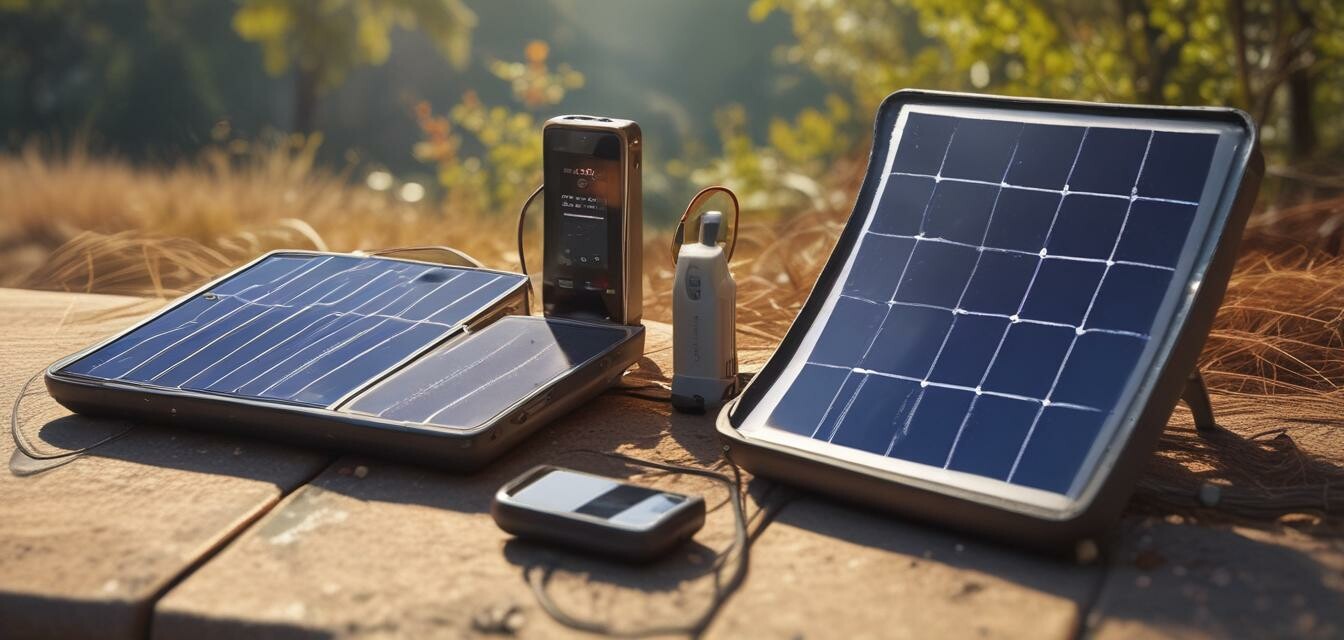
DIY Solar Charging Solutions for Home and Travel
Key Takeaways
- Solar charging is a great way to stay powered during emergencies or while traveling.
- DIY solar solutions can be customized for your specific needs.
- Choosing the right components is crucial for efficiency and effectiveness.
- Portable solar chargers are ideal for travel and outdoor activities.
- Early planning and preparation can ensure you're ready for power outages or off-grid excursions.
With the increasing need for renewable energy, DIY solar charging solutions have gained popularity, especially for those looking to stay powered up during emergencies and while traveling. Building your solar charging systems is not only a sustainable option but also a fun project that can ensure independence from traditional power sources. This article explores various creative DIY solutions for solar charging, detailing everything from basic solar panels to portable chargers that can be easily transported.
Why Choose Solar Charging?
Solar charging systems harness the power of the sun, making them an effective and eco-friendly option. Here are some reasons why you might consider solar charging solutions:
- Renewable energy source: Solar power is sustainable and reduces reliance on fossil fuels.
- Cost-effective: After the initial setup, solar energy can significantly lower energy costs.
- Portable options available: Solar chargers can easily be taken on camping trips or vacations.
- Emergency backup: A solar charger can provide power during outages or natural disasters.
Essential Components for DIY Solar Charging
To create an effective DIY solar charging system, you'll need specific components. Below is a list of the essential parts you'll want to include:
| Component | Function |
|---|---|
| Solar Panels | Convert sunlight into electrical energy. |
| Charge Controller | Regulates the voltage and current coming from the solar panels. |
| Batteries | Store the generated electricity for later use. |
| Inverter | Converts DC power from solar panels into AC power for household devices. |
| Portable Battery Packs | Provide easy charging options for devices while on the go. |
Creating a Basic DIY Solar Charger
Building a basic solar charger isn't as complicated as it may seem. Follow these simple steps:
- Gather Your Materials: Solar panels, charge controller, battery pack, and wires.
- Connect the Charge Controller: Connect the solar panel to the charge controller following the manufacturer’s instructions.
- Wire the Battery: Connect the battery to the charge controller to store the energy generated by the solar panel.
- Add an Inverter: If you want to charge AC devices, attach an inverter to the battery output.
- Test Your Charger: Expose the setup to sunlight and check if the charging process works correctly.
Portable Solar Chargers for Travel
When traveling, having a portable solar charger can be a game changer. Here are some tips for choosing the right portable solar charger:
Pros
- Lightweight and portable for easy transport.
- Can charge multiple devices simultaneously.
- Ideal for outdoor activities such as camping and hiking.
Cons
- May take longer to charge than conventional sources.
- Performance can be affected by weather conditions.
- Initial cost may be higher for quality products.
Storing Solar Energy for Emergencies
Having a reliable system to store solar energy can be very beneficial during unexpected power outages. It allows you to keep essential devices functional. Consider the following:
- Invest in quality rechargeable batteries for long-term use.
- Use a charge controller to ensure safe charging of batteries.
- Keep your system well-maintained to avoid potential hazards.
Best Practices for DIY Solar Solutions
To ensure your DIY solar charging systems function optimally, follow these best practices:
- Choose high-quality components for longevity and efficiency.
- Regularly check connections and wiring to prevent failure.
- Keep solar panels clean for maximum sunlight absorption.
- Participate in local renewable energy workshops to share knowledge and updates.
Conclusion
DIY solar charging solutions offer both convenience and sustainability, making them suitable for home use and travel. By investing some time into building your solar system, you can ensure a reliable source of energy during power outages and enjoy the freedom of being off the grid while exploring the great outdoors.
Tips for Beginners
- Start with a simple solar panel kit to familiarize yourself with the components.
- Read up on safe wiring practices before starting your project.
- Join online forums dedicated to renewable energy for guidance and tips.
For more information about creating customizable emergency kits, check out our preparedness tips section.
Explore the options for solar charging kits available for various needs.
Interested in learning more about portable power stations? They can provide additional backup solutions.
Be ready for emergencies with our battery backup systems to complement your solar setup.
For advice on emergency lighting solutions, check out our guide.
